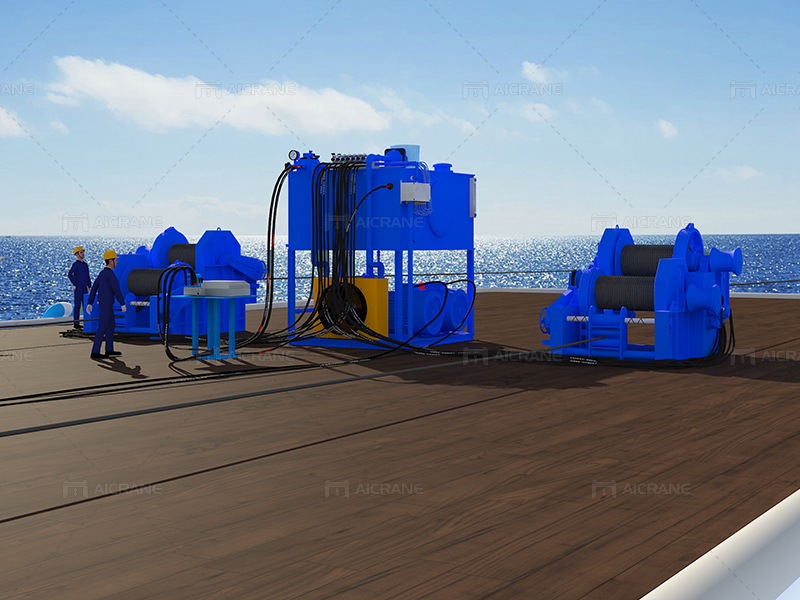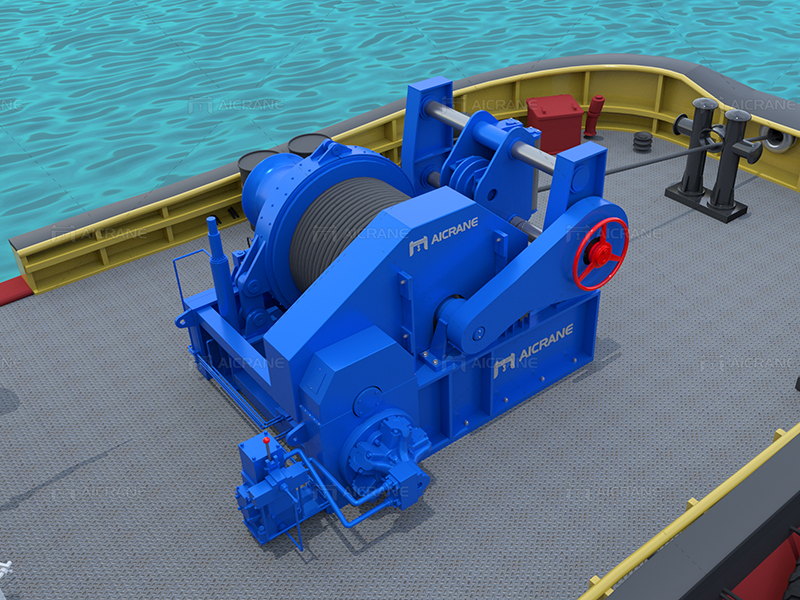Marine winches play a pivotal role in various maritime operations, serving as essential tools for tasks ranging from anchoring to towing. One common question that arises in the maritime industry is whether a marine winch can effectively handle both anchor handling and towing operations. In this article, we will explore the capabilities of marine winches and examine the factors that determine their suitability for these distinct yet critical functions.

Understanding Marine Winches:
Before delving into the compatibility of marine winches with anchor handling and towing, it’s crucial to understand the basic principles of these specialized machines. A marine winch is a mechanical device designed to wind up or wind out a cable or rope to control the movement of heavy objects on a vessel. The two primary types of marine winches are electric and hydraulic, each with its unique advantages and applications.
Anchor Handling with Marine Winches:
Anchor handling is a fundamental operation in maritime activities, especially during vessel mooring and offshore activities. The process involves deploying, retrieving, and maneuvering anchors, which demand a robust and reliable winching system. Marine winches utilized for anchor handling are equipped with features such as high line pull capacity, dynamic braking systems, and specialized drums to accommodate the heavy loads associated with anchoring.
Towing Operations and Marine Winches:
Towing, on the other hand, involves pulling or guiding another vessel, structure, or object through the water. This operation places different demands on a marine winch compared to anchor handling. Towing requires consistent tension, precise control, and often involves dynamic forces that can vary significantly depending on the towed object’s size and resistance. An effective towing winch must provide a steady and controlled pull, ensuring the safety of both vessels involved in the operation.

The Dual Role: Can a Marine Winch Do Both?
The capability of a marine winch to handle both anchor handling and towing operations largely depends on its design, specifications, and features. Some modern marine winches are engineered for versatility, allowing them to seamlessly transition between these two critical functions. Here are key factors that determine whether a marine winch is well-suited for both tasks:
Line Pull Capacity:
A versatile marine winch should have a sufficient line pull capacity to handle the heavy loads associated with both anchor handling and towing. This is a critical factor in ensuring the winch can effectively manage the forces involved in these operations.
Drum Design and Size:
The winch’s drum design and size play a crucial role in its ability to handle different tasks. Specialized drums with features such as variable speed and multiple layers ensure optimal performance in various scenarios, from slow and controlled anchor handling to steady towing operations.
Control Systems:
Advanced control systems are essential for precise operation in both anchor handling and towing. Features like variable speed control, automated tensioning, and emergency stop functions contribute to the winch’s adaptability in different maritime situations.
Power Source:
The power source of the marine winch, whether electric or hydraulic, can impact its suitability for dual roles. Electric winches are known for their efficiency and precise control, while hydraulic winches offer robust performance and are well-suited for heavy-duty applications.
Safety Features:
Safety is paramount in maritime operations. A winch designed for both anchor handling and towing should incorporate safety features such as overload protection, emergency braking, and fail-safe mechanisms to mitigate potential risks during operations.
Case Studies: Examples of Versatile Marine Winches
To illustrate the practical application of versatile marine winches, let’s examine a few case studies where these machines have successfully handled both anchor handling and towing operations.
Offshore Support Vessels: Offshore support vessels often encounter diverse tasks, including anchor handling and towing of equipment or structures. Modern winch systems on these vessels are designed to seamlessly switch between these functions, enhancing operational efficiency.
Tugboats: Tugboats are integral to towing operations in ports and harbors. The winches on tugboats are engineered to provide a steady and controlled pull when towing larger vessels, and they can also handle anchor handling duties when required.
Conclusion:
In conclusion, the versatility of a marine winch in handling both anchor operations and towing depends on various factors, including its design, capacity, control systems, and safety features. Advances in winch technology have led to the development of machines that can adeptly perform dual roles, providing a cost-effective and efficient solution for maritime operators. As the maritime industry continues to evolve, the demand for versatile winches capable of meeting the diverse needs of anchor handling and towing operations is likely to grow, driving further innovation in this crucial sector. To learn more, visit https://steelmillcranes.com/